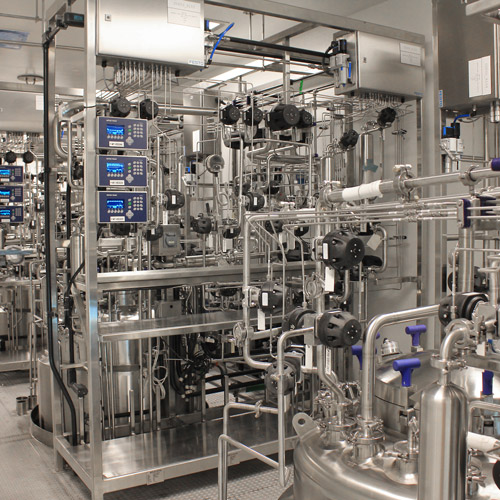It’s one of the most iconic scenes in the history of American cinema. Martin Brody calmly tends to his day’s work at sea when a massive shark rises suddenly from the water. He stares in disbelief, retreats, and deadpans the now famous line, “You’re gonna need a bigger boat.”
In some ways, the scene is a perfect metaphor for corporate real estate executive Neil Jurgens’ experience at Under Armour, where he is working with founder and CEO Kevin Plank, among others, to design and build an expansive and unprecedented waterfront headquarters campus. When Jurgens—the company’s vice president of corporate real estate, who has previous large-scale experience with companies such as Macerich and Disney—joined Under Armour in April 2013, Plank already had visions of taking the $2 billion company to $7.5 billion by 2018. Nevertheless, when Jurgens analyzed its existing real estate plans, he noticed trouble lurking just below the surface.
The New HQ
10,000
employees (current HQ holds 1,800)
5,000
cars
12,000
external jobs supported
4 million
square feet
4
phases
50
acres
7,000
seats in the sports stadium
2.9 million
square feet of office space
100,000
square feet of manufacturing space
500,000
square feet of amenities
2020
projected first phase delivery
Under Armour already has a planned unit development (PUD) that contemplates an additional growth of 600,000 square feet, but with revenues increasing by more than 30 percent and the company’s head count on the rise, Jurgens knew having the right space would become especially critical.
“Real estate is expensive, and changes drive costs up,” Jurgens says. “You want to make the right decision from the start while looking long term.”
When he met with Plank to discuss the CEO’s goals for the next 20 years, Jurgens started a growth analysis and came to a dramatic realization—Under Armour needed a bigger real estate plan.
In early 2016, Plank’s private real estate company, Sagamore Development, announced plans to turn more than 250 acres of Baltimore’s Port Covington waterfront into a mixed-use venture. Under Armour will take 50 acres of that space and transform it onto an all-encompassing HQ campus featuring a sports stadium, high rises, and a man-made lake.
“We’re starting with a clean slate and designing a full campus environment from scratch with no legacy buildings to restrict the creative process,” Jurgens says. “We’ll be able to create the exact home Under Armour needs, and the campus can grow along with the company.”
Under Armour will complete the headquarters, which will eventually house 10,000 “teammates,” in at least four stages over the next 20 years. Today, about 85 percent of those teammates occupy open floor plans. Jurgens expects that number to increase and relishes the opportunity to create work environments that both reflect and enable Under Armour’s brand and mission. He’s working with designer and architect Bohlin Cywinski Jackson to capture natural light, build in flexible spaces, and use authentic materials such as concrete, steel, and wood.
Additionally, 100,000 square feet of process innovation space will change the way Under Armour creates its shoes, apparel, and accessories.
“Bringing this space on site will be huge for us, because everyone will work together in a much more natural way,” Jurgens says. After redeveloping the company’s existing campus 70,000 square feet at a time, his teams have learned exactly what touches each business unit needs. Now, they can bring those nuances together in one location to promote collaboration. Sales people, wholesale partners, and stakeholders can tour the innovation group and adjacent areas to discover what’s on the horizon.
While the project will elevate the Under Armour brand, the city of Baltimore will also reap the economic rewards, as the complex will either create or support an estimated 12,000 jobs. Additionally, by opening the secure HQ’s waterfront area to the public, Under Armour will help revitalize a forgotten industrial corridor that’s been a black hole swallowing other attempted developments. Under Armour is building public access to the site’s lake and will host exhibitions at onsite locations that include a 7,000-seat stadium and an NCAA-rated track. Jurgens and his colleagues are in talks with the city and the state of Maryland to develop public transportation options that will bring employees and visitors to Port Covington.

That move is just one of many steps the company is taking to address sustainability. The complex will also generate some of its own electricity and also employ a unique water infrastructure to draw water from the middle branch of the Patapsco River. Once filtered, the water will help cool campus buildings before returning back to its source. Those efforts, along with rainwater reclamation, will help reduce the campus’ potable water requirement by an estimated 80 percent.
The project, announced in early 2016, is generating excitement at Under Armour’s existing Tide Point headquarters, a landlocked area that houses nearly 2,000 teammates.
“This new home helps us adapt to the market and move in what we believe is the right direction for the company,” Jurgens says. “It will become an asset that allows us to stay nimble so we’re not locked in to an old way of thinking or doing business.”
Just after the announcement regarding Port Covington, Under Armour released its financial report for the last quarter of 2015. Full-year revenues jumped 28 percent to $3.9 billion. Stock prices are up, and the growing company is hiring hundreds of people each year. Things are looking up at Under Armour, and Jurgens is confident he’s creating the right space to support the company’s continued success.


